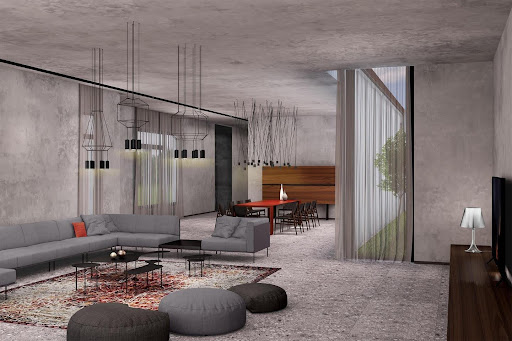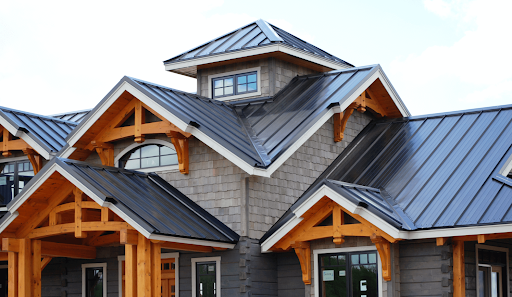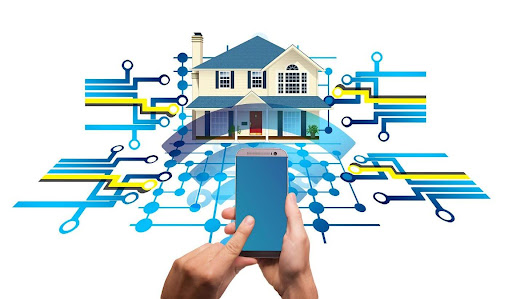Thomas Edison’s invention of the light bulb in the 19th century, revolutionized home lighting. Over time, the light bulb, has evolved both in design and technological development. Never in history has turning on lights been as simple as flipping on a wall switch but even that is quickly becoming a thing of the past. The 21st century has revolutionised home lighting once again through the introduction of smart lights. In this digital age, everything is becoming, smart, even homes. ‘SMART’ is an acronym in the technological space that stands for, ‘self-monitoring, analysis and reporting technology. If converting your home into a smart one is something you are considering, then smart lighting might be a good place to start. Smart building lighting is based on advanced technology. The technology is leaning more towards LED bulbs rather than incandescent ones. This is because the latter, consumes more energy than the other.
Through smart technology, appliances have an increased lighting capacity and smart lighting is therefore considered more handy and practical than ordinary lighting systems.
Normally, a simple kind of smart lighting system, can function remotely through the operation of an app on a smartphone or computer. A reliance on a variety of wireless transmissions, sending and receiving signals, is what allows a smart lighting system to work.
Table of Contents
Types of Smart Lighting
Switches and dimmers- these give the user a wider range of control. You can connect several bulbs to a single switch and cut down on costs. When using automated switches, voice controls will still work even if the lights are turned off at the switch. Another advantage they have is that they are not difficult to install.
Light bulbs and lamps- at the most basic level, they are bulbs that can be connected to a Wi-Fi system allowing them to be controlled from a dedicated app on a smartphone or computer. They will differ in terms of features which may include; adjustable light intensity, ambience colour change, automated and programmable schedule.
Whole home smart lighting systems- these are systems that use a single platform to control several, different, smart gadgets.
Things to Consider When Choosing Smart Lights
A Suitable Platform
In order to control the lights, you must consider what platform you will use.
Most smart lights have their own control apps. These are useful if you want to group your lights to create a schedule for turning on and off. However, this option tends to be limited since it will only apply to the lights.
If smartening the whole house is your aim however, a home platform would more suited to the task. In order to find one suited to the task, you would need to look into the varieties available and choose one suited to your needs.
A popular home platform option is pairing the smart gadgets to a voice assistant such as Google Assistant, Alexa or Siri
A Suitable Hub
Although different bulbs may differ in the means by which they send and receive signals, the common factor between them is that they require wireless transmissions to get the job done.
Bluetooth is good for a remotely controlled system. The Bluetooth radios, often built in within the gadgets, connect directly to your phone. However, in order for the system to work, you need to be within 50 feet of the device.
Other gadgets may use built in Wi-Fi radios which will connect directly to your router. As long as there is an internet connection, you can control them remotely, regardless of distance.
Zigbee is a local wireless network that is excellent for your smart home gadgets. A device using Zigbee will need to be connected to your router to translate its signals for your home network. Bulbs that use Zigbee often offer their version of a hub which is relatively simple to set up. However, it will cost a little bit more than what you would have spent on the other two.
Other lighting options may include sensors that detect motion or light making them automatic. This particular feature has been crucial in curbing the wastage of energy.
More advanced systems may contain machine learning techniques. This is where the system will study the lighting patterns of those who live in the home, and create an automated response: turning lights on and off automatically. It also creates the impression of people being at home by randomly turning lights on or off when the house is left empty for long periods of time.
Benefits of Smart Lighting
Cost Effective
Smart lighting systems are extremely advantageous in their increased controllability since they reduce wastage and general energy consumption.
Majority of smart lighting systems tend to use LED bulbs rather than incandescent ones. LED bulbs are 75 percent more efficient and they can last almost 25 times longer than incandescent ones.
An automated system will help curb wastage caused by the careless behaviours of homeowners.
Health Improvement
This may sound rather strange but research shows that there are many health benefits in using smart lighting.
Blue light that is emitted from many gadgets, affect the levels of melatonin and thus interferes with our sleeping patterns. If this occurs over a long period of time it may lead to other health issues associated with irregular sleeping patterns.
Smart lights can change colour that will not only change the ambience but help you sleep deeply without disrupting the cardiac rhythm.
Remotely Controlled
This is probably one of the major advantages of smart lighting. You don’t need to flip a wall switch anymore. With the help of sensors and other automated systems, homeowners have the advantage of being able to remotely control their lighting even if they are not at home. This also helps increase the security of the house.
Conclusion
As with everything new, there will always be some resistance towards smart lighting. The major challenge it poses is the high cost. Even though the cost of setting up smart lighting maybe high, the cost is justified by the amount of energy that will be saved over time as well as the general lighting bills over time.
Another challenge may be the technological aspect of smart lighting but as long as you are willing to adjust, the benefits by far outweigh the inconvenience of learning how to use it.





